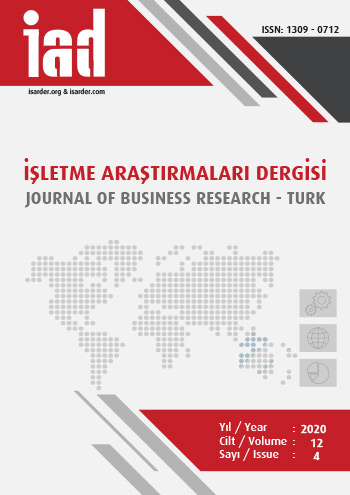Sürekli Denetim Uygulamalarının Temel Amaçları ve Sürekli Denetimin Uygulanma Koşulları: İSO 500 Büyük Sanayi Kuruluşu’nda Bir Araştırma
Main Objectives of Continuous Auditing Practices and Implementation Terms of Continuous Auditing: A Study in ISO 500 Large Industrial Enterprise
Author(s): Seda Ağgül, Turan ÖndeşSubject(s): Business Economy / Management, Accounting - Business Administration, ICT Information and Communications Technologies
Published by: Orhan Sağçolak
Keywords: Continuous Auditing; Internal Audit; İSO 500;
Summary/Abstract: Purpose – The purpose of this study is to reveal main objectives of continuous auditing practices and implementation terms of continuous auditing in ISO 500 large industrial enterprise according to Istanbul Chamber of Industry (ISO) in 2018. Design/methodology/approach – The survey method has been used in the study and the prepared questionnaire has been applied to the employees of the accounting / auditing department of the companies. The data obtained from the questionnaires have been analyzed using SPSS and AMOS software programs. In order to determine the reliability and validity of the questionnaires, exploratory and confirmatory factor analyses have been performed. In order to reveal the reliability of the measurement model, the compound reliability (CR) test has been also used in addition to the confirmatory factor analysis. Furthermore, there are descriptive statistics on the main objectives and implementation terms of the continuous auditing practices. Findings – It has been determined that the companies participating in the study have absorbed the main objectives of the continuous auditing, have a positive perspective towards the continuous auditing, have knowledge about the implementation terms of the continuous auditing, and consider it as advantageous. Discussion – All of the companies participating in the study have stated that the continuous auditing satisfies their expectations. In this context, it can be concluded that the expected benefits of continuous auditing have been realized and companies have been satisfied with their continuous auditing practices. This result can be a driving force for companies that have not yet integrated their continuous audit practices with their internal auditing systems and may motivate them to move to continuous auditing practices.
Journal: İşletme Araştırmaları Dergisi
- Issue Year: 12/2020
- Issue No: 4
- Page Range: 3550-3568
- Page Count: 19
- Language: Turkish

